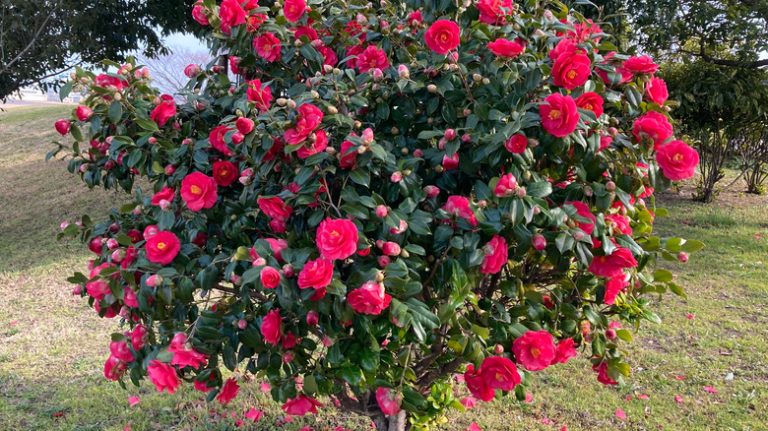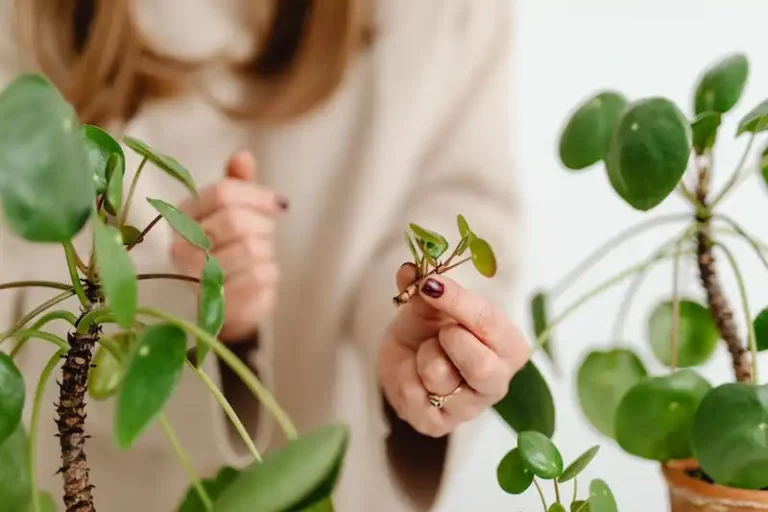Nasturtiums are a gardener’s favourite for many reasons. These vibrant and ornamental flowers not only add a pop of colour to any garden, but they also serve as a valuable companion plant for vegetable gardens. One of the great advantages of nasturtiums is that they can be easily planted in different locations, making them a versatile option for any garden.
When it comes to sowing location, nasturtiums can thrive in a variety of soils. They tend to prefer well-drained, moderately fertile soil, but they can tolerate poor soils as well. Whether it’s a sunny spot in your garden or a shady area that needs some life, nasturtiums can thrive almost anywhere. This makes them a go-to choice for gardeners in all types of climates.
Planting nasturtiums is relatively simple. Seeds can be planted directly in the ground after the danger of frost has passed, which is typically in early spring or late March. However, if you’re eager to get started or have a shorter growing season, you can start the seeds indoors a few weeks earlier. Then, transplant the seedlings once the threat of frost is over.
Once the nasturtiums are planted, they don’t require much care. They’re a low-maintenance plant that only needs water during dry spells. Overwatering can lead to the foliage wilting, so it’s important to strike a balance. Additionally, nasturtiums are not heavy feeders, so fertilizing them is not necessary unless your soil is particularly poor.
One of the great benefits of nasturtiums is their ability to attract beneficial insects to your garden. Bees, butterflies, and other pollinators are drawn to their vibrant blooms, which in turn promotes the health and yield of other plants in your garden. Additionally, nasturtiums are known for their ability to repel certain pests, making them a valuable asset to any grower’s garden.
So whether you’re looking to add a quick and easy pop of colour, attract beneficial insects, or repel pests, nasturtiums are a perfect choice. They’re a versatile plant that can thrive in various conditions, adding beauty and value to your garden.
Nasturtium – Key Growing Information
Planting nasturtiums is a popular choice for many gardeners due to their vibrant and peppy flowers, as well as their edible leaves and blossoms. This guide provides key information for successfully growing nasturtiums, from sowing to care.
Planting Location: Nasturtiums can be planted in both full sun and partial shade. They prefer a location with well-drained soil and are suitable for growing in both garden beds and containers.
Sowing: Nasturtium seeds can be sown directly into the garden after the risk of frost has passed. They can also be started indoors in pots and transplanted outside once the weather warms up.
Care: Nasturtiums are easy to care for and require minimal attention. Regular watering is necessary, but overwatering should be avoided to prevent root rot. Fertilising is not usually required, as nasturtiums prefer nutrient-poor soil. Pests and diseases are rarely a problem for these hardy plants.
Propagation: Nasturtiums can be easily propagated through seed saving. The seed pods can be harvested once they turn brown and dry. The seeds can then be stored and used for future plantings.
Pruning: Nasturtiums do not require much pruning. However, dead or damaged plant parts should be removed to maintain the overall health and appearance of the plant.
Flowering: Nasturtiums are known for their vibrant and abundant flowers, which appear in a range of colors. The first flowers usually appear within 6-8 weeks after planting.
Harvesting: Both the leaves and blossoms of nasturtiums are edible and can be harvested for use in salads or as a garnish. The leaves and flowers should be picked regularly to ensure continuous blooming and maximum yields.
Hardening Off: Nasturtium seedlings need to be hardened off before being planted outside. Gradually expose them to outdoor conditions over a period of about a week to help them adjust.
Climbing Varieties: Some nasturtium varieties are climbers and can be trained to grow up fences or trellises. These varieties can add a beautiful vertical element to your garden.
Overwintering: Nasturtiums are frost-sensitive and will not survive freezing temperatures. In colder regions, the plants will die down with the first frosts. However, in warmer climates, they may continue to grow throughout the year.
Additional Information: For more detailed information on growing nasturtiums, consult gardening books or online resources. The local library or a grower’s association may also have resources available.
From the Grower’s Library
Planting nasturtiums is a popular gardening activity for many growers. Nasturtiums, with their vibrant blossoms and peppery flavor, are easy to grow and provide a beautiful addition to any garden. Whether you are a seasoned gardener or just starting out, this guide will provide you with all the information you need to successfully grow nasturtiums.
Nasturtiums are native to South America but have been cultivated for centuries in gardens all over the world. They are known for their ability to attract beneficial insects such as bees and moths, making them a great companion plant for vegetable gardens. Nasturtiums also have a natural repellent effect on pests like aphids, which can be a common problem in gardens.
Sowing nasturtium seeds can be done directly in the ground or in pots for transplanting later. The ideal location for growing nasturtiums is in a sunny area with well-draining soil. They can tolerate a variety of soils, but tend to thrive best in moderately fertile soil with a pH range of 6.0-7.0.
|
|
Nasturtiums are known for their round, flat leaves and bright, showy blossoms that come in a variety of colors. Both the leaves and flowers are edible and make a great addition to salads, giving them a vibrant color and a tangy flavor similar to watercress. Just be sure to wash them thoroughly before using.
Overall, nasturtiums are low-maintenance plants that can thrive in various growing conditions. They are particularly well-suited for novice gardeners because they are easy to grow and don’t require much care. With their beautiful foliage and vibrant blooms, nasturtiums can add a pop of color to your garden while also providing some practical benefits.
So whether you are looking to attract beneficial insects, deter pests, or simply enjoy the beauty and flavor of nasturtiums, give them a try in your garden this year!
Questions
1. Where is the best location to sow nasturtium seeds?
2. How do you care for nasturtium plants?
3. Can nasturtiums tolerate frosts?
4. Are nasturtiums native plants?
5. What are the companion plants for nasturtiums?
6. Do nasturtiums climb?
7. How do you propagate nasturtiums?
8. How long does it take for nasturtium seeds to germinate?
9. What type of soil do nasturtiums prefer?
10. Do nasturtiums need a lot of water?
11. Can nasturtiums be used as a ground cover?
12. What are the benefits of planting nasturtiums?
13. Do nasturtiums attract pests?
14. Are nasturtiums beneficial for other plants?
15. When should nasturtium seeds be planted?
16. How do you thin out nasturtium seedlings?
17. How can nasturtiums be used as a companion plant?
18. Are nasturtiums tolerant of hot temperatures?
19. Can nasturtiums be grown in pots?
20. What problems can occur when growing nasturtiums?
Planting nasturtiums sowing location plant care
Nasturtiums are easy-to-grow, low-maintenance plants that add vibrant beauty to any garden. They are known for their stunning round leaves and bright, showy flowers in shades of red, orange, and yellow. Nasturtiums can be used as both ornamental and edible plants, as they have a mild peppery flavor and are rich in vitamin C.
When planting nasturtiums, it’s important to choose a sunny spot in your garden. Nasturtiums need at least 4 hours of direct sunlight every day to thrive. They can also tolerate partial shade, but too much shade can result in leggy plants with fewer flowers.
Planting nasturtiums is best done in early spring, after the last frosts. You can start seeds indoors in March and transplant them outside once the weather warms up. Nasturtiums can also be directly sown into the garden in late spring or early summer.
Prepare the soil before planting by removing any weeds and loosening the dirt. Nasturtiums prefer well-drained soils and don’t require much fertilizing. In fact, too much nitrogen can lead to excessive foliage growth and fewer flowers. However, if your soil is poor, you can add some compost or organic matter to improve its health.
Plant the nasturtium seeds about 1 inch deep and 10-12 inches apart. The seeds are large and easy to handle, making them ideal for children and beginner gardeners. Once the seeds are in place, water them lightly and keep the soil moist until the seedlings appear.
Nasturtiums are known for their climbing variety, which can take over other areas of the garden if not properly managed. To keep them in check, you can clip off their tendrils or provide a trellis for them to climb. This will help create a neat and organized appearance in your garden.
Planting nasturtiums near other vegetables and herbs can also be beneficial. They act as a natural pest repellent, attracting aphids and other harmful insects away from other plants. They also make excellent companions to tomatoes, radishes, and cucumbers, enhancing their flavor and deterring pests.
Regular pruning is key to maintaining the health and appearance of your nasturtium plants. Remove any dead or diseased parts, and trim back any areas that are overcrowded or leggy. This will encourage new growth and ensure that your plants continue to bloom all season long.
In colder climates, nasturtiums are often treated as annuals and replanted every year. However, in warmer regions, they can be treated as perennials and will come back year after year. They are also well-suited for container gardening and can be grown on balconies or patios.
To save their seeds for future planting, allow the nasturtium flowers to fade and dry. The seeds will appear in small clusters and can be easily collected. Store them in a cool, dry place until you’re ready to sow them again.
In conclusion, planting nasturtiums is a rewarding and enjoyable experience for gardeners of all skill levels. With their beautiful flowers, easy care requirements, and versatile uses, nasturtiums are a favorite among many garden enthusiasts.





